Hawaii is a dream destination, but first-time visitors often run into surprises they wish they had known about beforehand. Planning ahead can make a big difference in everything from packing to choosing the right place to stay. Here are our top ten (well really thirteen) things you or a friend might just want to know.
The ocean changes with the seasons.
That serene, family-friendly swimming beach in the summer? It could be a powerful surf break in the winter, making it completely unsuitable for casual swimmers. Likewise, if you’re a surfer hoping for big waves, summer might leave you disappointed. The North Shore of Oahu, for example, is world-famous for its massive winter waves but is often calm and ideal for swimming in summer.
For travelers who plan to swim, snorkel, or surf, this seasonal shift is crucial when picking accommodations. Checking seasonal surf conditions and understanding what to expect in terms of the ocean ahead of time can help you avoid unexpected and disappointing surprises when you arrive.
Consider the wind when booking activities.
Trade winds are a defining feature of Hawaii’s weather and can impact your plans in ways you might not expect. Mornings tend to be calmer, while afternoons often bring stronger winds that can make ocean activities more challenging.
If you’re prone to seasickness, a morning boat tour is likely to be a smoother ride. The same applies to kayak excursions—paddling against afternoon winds is a very different experience than gliding through calm waters in the morning.
Driving takes longer than you planned for.
Hawaii’s roads move at a slower pace, and the mileage between two points can be misleading. On Kauai, for example, what looks like a 30-minute drive can stretch to an hour or even two with traffic and road conditions on the two lane highway. One resident commented, “We always check Google Maps before heading out—it can save you from sitting in unexpected traffic jams.”
Visitors planning packed itineraries should allow extra time between activities. Rushing through a tight schedule can lead to frustration, especially when unexpected slowdowns occur.
You don’t need to bring as many clothes as you think.
Hawaii is casual. Most restaurants and activities don’t require anything beyond comfortable attire, and many hotels and rentals have laundry facilities. Lightweight, breathable fabrics work best, and packing less can free up space for souvenirs or turn the need for checked bags into just carry-ons.
Kathy J. shared, “I always bring a beach towel on the plane—it works as a blanket or extra padding.” But Richard S. countered, “Forget beach towels. Towels weigh too much and don’t dry quickly.”
Bringing versatile clothing and leaving behind bulky, heavy items can make packing easier.
You’ll need reservations for more than just dinner.
Hawaii’s most popular attractions now require advance reservations. If you show up without one at those, you will be turned away.
On Oahu, Hanauma Bay requires timed entry reservations to help protect its fragile marine environment. Diamond Head also mandates a reservation for hiking, ensuring manageable crowd levels.
Over on Maui, sunrise viewing at Haleakala National Park requires an advance permit. That will scenic Iao Valley State Monument has parking and entry reservation requirements for visitors from out of state.
Kauai’s Haena State Park also limits daily visitors, meaning you’ll need to book far ahead for parking and entry.
The Big Island’s Waipio Valley has its own restrictions now, with limited access rules. Visits areonly possible as part of a tour. Waipio Valley Road is closed to non-residents and other visitor access.
One traveler shared, “We didn’t know Diamond Head needed a reservation. When we showed up, they wouldn’t let us in. We had to scramble for a new plan.”
To avoid surprises, check reservation policies for any key activities before your trip.
Hawaii flights are in flux, and it could affect your trip.
Flights to Hawaii have been somewhat less predictable, with route changes and shifting airline policies. Hawaiian Airlines has been acquired by Alaska Airlines, which may lead to further changes in interisland and mainland flights. Some routes have already been cut on Southwest Airlines too, and prices fluctuate greatly based on demand.
For travelers booking flights months in advance, monitoring airline updates and being flexible with travel dates can help secure the best options.
Jeans aren’t banned, but they might just make you miserable.
Lisa commented, “No jeans? I grew up in Kaneohe, and wearing jeans was as normal as breathing.” While that’s true, jeans may not be the best choice for visitors. The humid heat can make them uncomfortable, and they take longer to dry if they get wet.
Lightweight pants, skirts, or shorts are better options. If you plan to visit cooler areas like Mauna Kea or Haleakala, you’ll need warm layers—but even then, heavy denim may not be ideal.
Your shoes can make or break your trip.
Footwear depends entirely on your plans. Lee P. shared, “My hiking boots are heavy! I opt for sturdy sandals like Tevas or Chacos. They’re good for trekking and travel light.” Steve S. added, “Teva-type waterproof hiking sandals are great for trails, crossing streams, and uneven terrain. Quick drying, sure-footed, and easy to pack.”
Rob N. advised, “Wear your hiking shoes on the plane, buy slippers when you get here.” This can save suitcase space while ensuring you have comfortable footwear for every activity.
Some items are much more expensive in Hawaii.
Leah R. shared a surprising tip: “I always bring two rolls of toilet paper. Vacation rentals only leave one or two, and the rest is on you. Toilet paper is expensive.”
Even small essentials like sunscreen, toiletries, and snacks can be far more expensive in Hawaii. Packing a few basics from home can save money—though if you have a Costco membership, shopping there can help offset the higher prices.
You might not need to bring your snorkel gear.
Many visitors assume they need to pack a full snorkel set, but Troy U. had a different take. “Definitely bring your own mask if you have one you like. The same goes for snorkels and fins. A poorly fitting mask will ruin a good snorkeling session.”
Tour companies usually provide gear, and many vacation rentals have extras. Unless you have a specific preference, renting or borrowing gear can save luggage space.
Bring a refillable water bottle.
Plastic waste is a major concern in Hawaii. Steve S. said, “Definitely bring a refillable water bottle. Local water across the islands is excellent, and plastic is killing the Earth.”
Jen added, “I am saddened by the pallets of bottled water visitors buy at grocery stores. Hawaii’s tap water is clean and drinkable, but many don’t realize it.”
Bringing a reusable bottle reduces waste and saves money. Some Hawaii hotels now offer free refillable filtered water dispensers.
You’ll want a very light rain jacket, but do check the waterproofing.
Hawaii’s weather is unpredictable, and rain showers can pop up at any time. Richard S. asked, “Can you name one or two brands of unlined waterproof jackets?”
Beat of Hawaii responded, “The waterproofing on all of them is pretty short-lived. Amazon sells a ton of them.” Some visitors prefer a cheap plastic poncho unless expecting heavy rain or wind, although we wouldn’t recommend it.
Your ID might not be enough.
Real ID requirements will take effect on May 7, 2025, but some travelers already run into issues. Standard driver’s licenses from some states may not be Real ID-compliant, and TSA agents have had trouble scanning certain IDs.
One traveler shared, “TSA has been unable to scan my wife’s new Colorado driver’s license for the last two or three years!” Others rely on a passport card or passport to avoid any problems at airport security.
Even though Hawaii is a domestic destination, checking your ID in advance can help prevent unexpected delays at the airport.
Final thoughts.
Hawaii is paradise, but knowing these insider tips will make your trip smoother. Have you run into any unexpected surprises on your visit? Share your experience in the comments below.
Get Breaking Hawaii Travel News
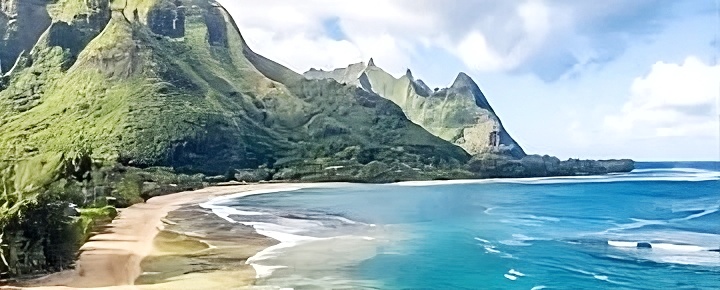
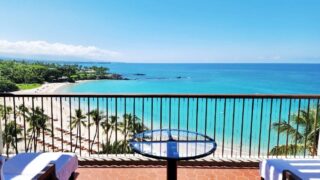
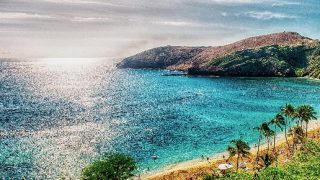

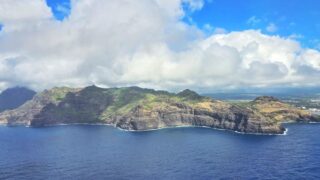
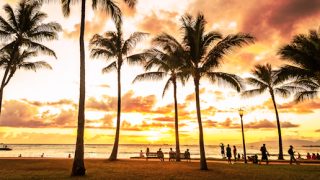
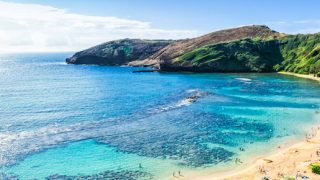
Bring reusable shopping bags, Hawaii has banned single use bags
I can’t believe that you tell people to drink the water from the tap here. In my 30 years living here I’ve never experienced the water to taste like it was safe to drink. I don’t agree with buying water in plastic bottles but a refillable water bottle and some type of filtered water is recommended in my opinion
Which island are you on? I never had bad experience with tap water, and actually tasted various sources of tap water on Mainland that don’t taste nearly as good as on O’ahu. There are certain safety standards set by EPA that each water authority has to follow, regardless of geographical location.
You can find reports for any O’ahu address here and read more about water safety and implemented safety and testing protocols:
boardofwatersupply.com/water-quality/water-quality-report
From FAQ:
“Do customers need to purchase water filter units for their homes?
The municipal water supply served to Oahu’s residents is safe to drink and use, and does not require treatment by a home filtration unit.”
The one thing I wish I had known before my first trip to Hawaii is that the daily rate quoted for your hotel room (+ taxes) is not likely your final cost as hotels in Hawaii are found of adding significant daily “resort fees” to pad your bill, much like hotels on the LV strip.
Despite what the article suggests, you’re better off buying your sunscreen here. Both the state and various counties have their own laws about what ingredients are like sunscreens, and terms like reef friendly are unregulated marketing gimmicks. For example only mineral only sunscreens are legal to use within Maui county, and violators are subject to a $1,000 fine.
That doesn’t really save you much money bring it from home to bring the wrong thing.
Been there…although beautiful it is massively expensive and from NY takes forever to arrive there….for me the Caribbean is closer to travel to. The many keys in Florida also offer a nice alternative that you can drive to if time isn’t a issue.
I am leaving for Kona in two weeks. I’m wondering if There is a way to use a trolley or a bus to get to volcano national park
The Hele-On Bus No. 11 Red Line runs between Hilo and the park, stopping at the Kīlauea Visitor Center.
If, however, you’ve never been to Big Island, you will quickly realize why its nick name is “Big” (the official name is Hawai’i). Renting a car is strongly recommend. The whole area around the National Park is beautiful, especially the ride down to the rugged coast.
All excellent advice, also the windward side of the islands gets most of the rain and wind.(east) Whereas the leeward side tends to be more calm. (west)
Buy a bus pass on Oahu…traffic is bad and parking is worse!
Seriously??
You are advising visitors to bring their own toilet paper with them to Hawaii?
I just bought some here in Kapaa, Kauai. It cost me 99 cents a roll.
If you can’t afford to buy toilet paper, maybe you shouldn’t visit us.
Thousands of $ for a trip to Hawaii and you’re going to take up space in your bags for toilet paper?!
Consider purchasing rental car insurance Before you arrive if you think you need it. The difference between $11 a day from say – Allianz and $30+ a day from the rental company at the airport is eye opening.
Best Regards
Mahalo for the info!
A tip for hiking in Kauai. Kauai, as the oldest of the islands, has developed a deep thick sticky tropical soil that really is hard to remove from shoes and socks. Unless you really need heavy boots, we developed the habit of bringing our old trail runners or even just running shoes and socks that we can just leave behind. They don’t really clean up, so it’s just a space saver on the way back that would otherwise be filled by throw aways at home.
Just got home from 10 days in Kauai and Oahu. Great weather, but here are few things, traffic in Kauai driving to Princeville will take longer than expected. Book car and airlines directly, I went with Travelocity and had to make changes, good luck. Hawaiian air and Budget did their best with large inflow of tourist. It takes a while but a drive around the whole island of Oahu is great, especially in a convertible, pick the day
#11, Hawaii is one of the most racist places in the planet. The locals don’t want you there.
#12, when you go to the beach, leave your car windows down and doors unlocked because someone will break into it otherwise.
For all the tourists worried about the cost of toilet paper for their condos why don’t you just use the public restrooms near most beaches. Most of the time there is an extra roll you can take back to the condo.
A charge to park a rental car in the hotel parking lot.
Daily security deposit on hotel or condo refunded on credit card after you check out.
Can I spend time with Magnum, Higgins, T. C. And Rick
Insurance companies advise hosts to remove snorkel & face masks from their amenities. Hosts cannot assure a good fit for every client & that becomes a liability.
It boggles my mind that visitors don’t do any research before arrival. I.e, checking with the places they wish to visit like Diamond Head, etc. it’s like they just show up and can’t believe they need reservations for most spots. People just don’t read anymore.
Add #11: “On-Shore Wave Breaks” can ruin your life, forever. Some of our beaches are notorious for this, so don’t even think
about body-surfing if waves are breaking in shallow water. [I’ve personally cared for more patients with broken necks (all tourists!) than I’d like to ever count…I could write a book]
Bring ziplock bags for any opened food that you keep in your hotel room otherwise the ants will enjoy it too.
$40 for toilet paper is a little spendy and I do agree with her if you can cut any corners to make it less expensive than I say do it.
Do people really believe that the price is $40??? If so, I have a bridge between O’ahu and Maui to sell…
Toilet paper?? Seriously? Hahahaha ! I hear people complain about prices in Hawai’i all the time, and for a good reason, but this comment beats them all.
If you can’t afford to buy a role or two of toilet paper while vacationing in Hawai’i, after paying thousands of dollars for your entire trip, then balancing your checkbook is definitely not on the list of your essential survival skills. Still living with parents?
You can bring sunscreen for around the pool, but you might still need to buy some if what you brought is not reef safe for the ocean.
No, please also wear reef safe sunscreen around the pool as well. The chemicals from the sunscreen wash off of you when you take a shower and get into the water system and to the ocean. This is part of why It’s good to wear reef safe sunscreen anywhere you live because water eventually makes its way to the ocean.
It’s not hard some hotels even have sunscreen dispensers in their lobbies. Also look into options like clothing that has uv production already built in. Cotton has a SPF rating of about 5.
Usually you can only buy packs of 6 rolls so if you only need 1 or 2 you have to leave the rest of the rolls behind or pack them.
Do you know how much 6-rolls pack costs? If you walk into any Safeway or Foodland and check for yourself, you’ll see that the price is silly to even debate. We’re taking about $6-8!!!
If anyone thinks that this expense, which is a drop in a bucket compared to the cost of a typical vacation, poses any financial burden, then perhaps Hawaii is not for them.
There are so many wonderful things to do in Hawaii. I spend a fair amount of time on Kauai and would remind people to check on water quality of streams and bays. After rains, the waterways sometimes have high bacteria levels.
Be safe.
I always bring English muffins. Bread is super expensive as is cereal. You can add a ziplock bag with that. And protein bars. Peanut butter sandwiches for the plane ride and mixed nuts. Asst tea bags. Small s+p. Travel size moist towelettes for sticky/dirty hands or cleaner for surfaces. Earplugs and masks.
Please no nuts. Those with peanut allergies don’t have to eat them to have a reaction.
You forgot that tourists need to be told to leave the wildlife alone. I don’t understand dear stand why they all want a picture with the honu.
I always bring a waterproof/windbreaker jacket- Land’s End makes a great hooded one that folds up into one of the pockets for easy packing. The first time we visited Kauai, we were disappointed we didn’t have water shoes. They really help walking over slippery rocks, and especially in the surf where there are rocks, seashells, and coral.
Don’t know how it is now with possibly lower tourist loads, but Mama’s on Maui has often been booked fully months in advance of our trips, even in late fall-typically a light tourist time when we have travelled to Maui previously.
Don’t buy/use full face snorkle masks!!!
Very important! For those who don’t know, these can trap carbon dioxide and suffocate you.
I always bring instant oatmeal on my Hawaii trips, and usually mail it with my camping and snorkel gear to my hotel about five days before. Allows me to only eat out once or twice a day, and also get an early start to activities.
One thing to add to reusable water bottle. Bring some reusable bags, a lot of stores have completely gotten rid of the option of plastic or paper bags and you don’t want to end up with an ABC bag that disintegrates almost immediately.
To add to the driving one. Hawaii has slower speed limits then the mainland. Like people who are expecting highway speeds to be 85 with everyone driving 95 are going to be shocked by 60 MPH being the fastest allowed anywhere. Especially people who are used to driving 55 MPH on rural roads.